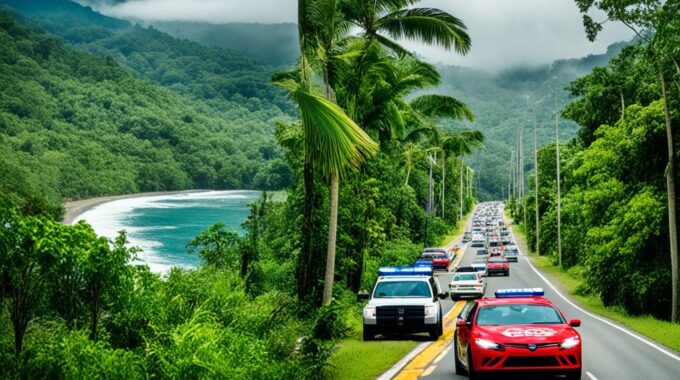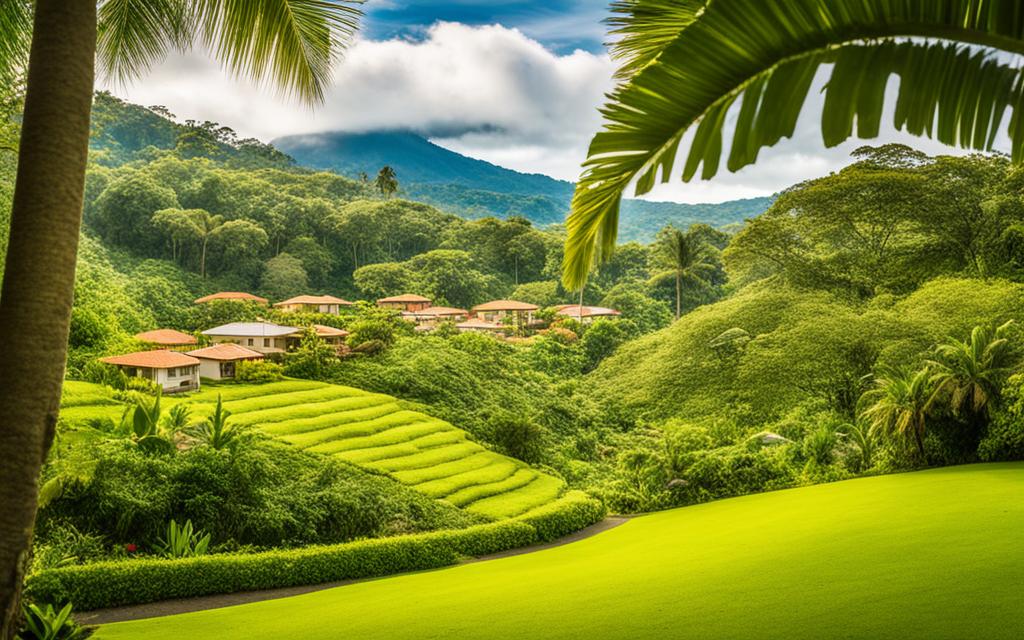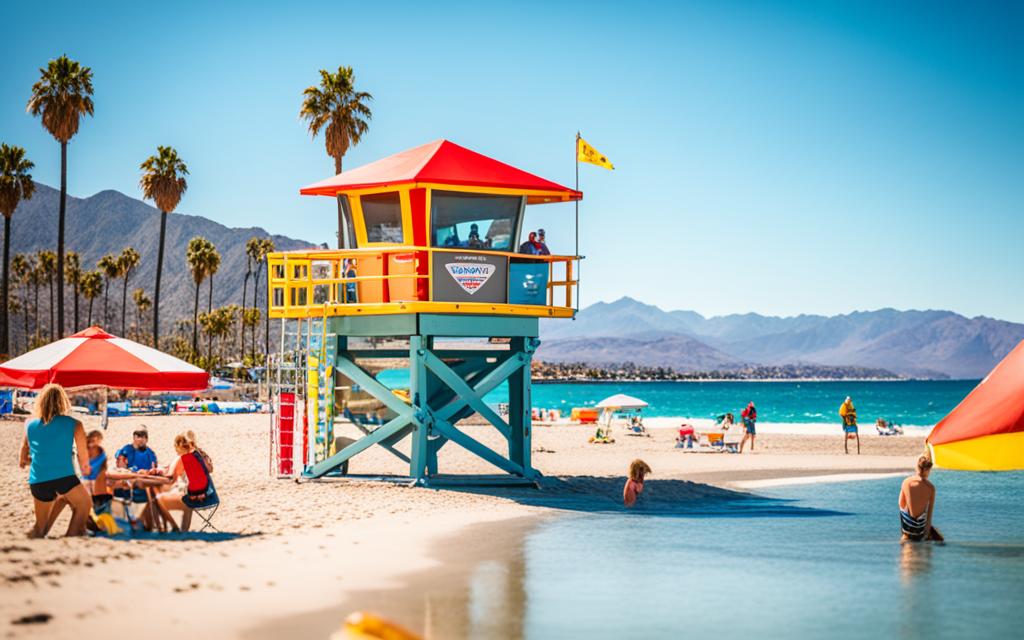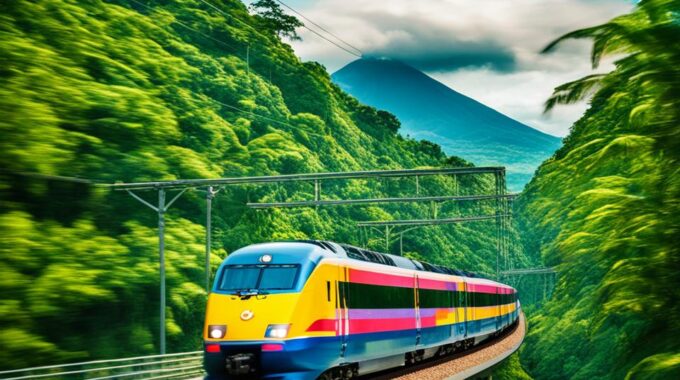Discover fast-track immigration options in Costa Rica with CRIE. Explore residency visas, investment opportunities, and expedited pathways for retirees and digital nomads.

Costa Rica vs. Panama: Analyzing Safety Factors
When considering the safety comparison between Costa Rica vs Panama, travelers and investors alike often turn to reliable metrics to make informed decisions. According to the Global Peace Index (GPI), a trusted resource published by the Institute for Economics and Peace, both countries have emerged as frontrunners in providing secure environments. However, the specific attributes that contribute to their high safety rankings such as political stability and crime rates in Costa Rica vs Panama vary, presenting a nuanced safety comparison between them.
These nations have earned their positions as some of the safest Central American countries, each boasting unique features that contribute to their distinctions. The analysis of Costa Rica security indicates a higher GPI ranking, which can be placed in context with its historical decisions, such as abolishing the military. On the other hand, Panama safety comparison would invariably include its role as a cosmopolitan hub, attracting business and tourism against a backdrop of lower panama violence statistics. With tourists and investors prioritizing central America safety, these factors become vital in understanding and navigating the region.
Regardless of varying safety factors, both Costa Rica and Panama present compelling cases for those seeking to explore, invest, or settle in Central America. With both nations demonstrating a commitment to ensuring peace and security within their borders, understanding the specific elements that underscore their status can provide deeper insights into what makes them preferable destinations.
Key Takeaways
- Costa Rica ranks as the safest Central American country on the GPI scale.
- Political stability and lower violent crime rates influence the safety comparison of Costa Rica vs Panama.
- Costa Rica’s historical decision to abolish its armed forces contributes to its global perception as a peaceful nation.
- Panama’s strategic importance and cosmopolitan nature are central to its safety and security perceptions.
- Understanding the unique safety factors of each country is crucial for travel and investment considerations in Central America.
Comparing Safety in Costa Rica and Panama Using GPI Metrics
Travelers and entrepreneurs looking into Central America often prioritize safety when making decisions about their destinations. This is where the Global Peace Index (GPI), which ranks nations on peacefulness, becomes a crucial tool for comparison. But what factors contribute to the high GPI ranks of Costa Rica and Panama, and how do crime statistics and political stability inform these scores? This section delves into the details, offering insights into safety in Latin American countries, with a focus on how these two nations achieve their respective positions on the GPI.
Understanding the Global Peace Index (GPI)
The GPI assesses countries across the globe based on various safety and security metrics. This index gauges political stability, societal safety, international relations, and the prevalence of violence or conflict within a country. An intricate analysis that goes beyond the mere tallying of violent incidents, the GPI looks at the structure of society itself and how it fosters peace or, conversely, unrest.
Political Stability and Crime Rates in Costa Rica and Panama
In the quest to evaluate safety in Latin American countries, Costa Rica often emerges as a paradigm of serenity, primarily due to its abolition of the military and strategic decisions promoting social harmony. This approach has cultivated a stable political environment that, coupled with its rich biodiversity, positions Costa Rica as a magnet for conscientious travelers. Conversely, the crime statistics in Panama vs Costa Rica highlight a stark contrast. While Panama has made strides with its dedicated security measures, especially in the bustling Panama City, some concerns persist, affecting the country’s GPI ranking.
Impact of Societal Safety on Travel and Investment
A crucial consideration for anyone considering travel or investment in the region is understanding current Latin American travel advisories. These advisories, often impacted by domestic and regional safety concerns, directly influence decision-making for tourists and investors. A nation’s social strides towards ensuring peace often translate into being recognized as safe destinations in Central America. Costa Rica’s commitment to ecotourism and sustainability highlights the reasons Costa Rica is safer in comparison to its regional counterparts, whereas Panama continues to improve aspects of its Panama security comparison through vigilant policies aimed at safeguarding its modern metropolis as well as its traditional areas.
As we cross-reference the GPI with firsthand research and advised travel safety tips, it’s clearer that both countries have their distinct advantages and areas for development in context to safety. Travelers and investors alike benefit from this granularity, which informs not only their choices but also the ongoing efforts of these nations to bolster their standings as some of the most secure destinations in Central America.
Why Is Costa Rica Safer Than Panama
Delving into the factors contributing to security, Costa Rica and Panama offer distinctive narratives. Recognized among the safest countries in Central America, they underpin the allure of the region for both travelers and business investors. This inquiry examines Costa Rica’s preeminence in personal safety, addressing various dynamics that substantiate its notable standing in safety metrics.

Assessing the Elements of National Safety
Certain vital elements construct the scaffold for national safety. A stable political landscape, vigilant law enforcement, minimal violent crime rates, and a contained number of internal and external conflicts coalesce to establish a secure nation. Stringently examining each of these components reveals why Costa Rica consistently outperforms its neighbors regarding tourist safety and resident security.
Costa Rica’s Military Abolition as a Peace Strategy
In a bold maneuver reflective of its peaceful ethos, Costa Rica disbanded its military forces over seven decades ago. This strategic resolution symbolizes a commitment to peace and enhanced societal safety, which has become a cornerstone of Costa Rica’s national identity. The absence of the military has dissuaded the potentiality of coups and authoritarian regimes, contributing to an environment where personal safety in Costa Rica is highly prioritized.
Comparative Analysis of Safety Strategies
The safety comparison Costa Rica Panama is not merely a juxtaposition of data; it’s an exploration into the divergent paths each has taken to ensure national security. Costa Rica’s investment in social programs and sustainability contrasts with Panama’s focus on fostering a robust commercial environment, which includes streamlined residency processes that appeal to international entrepreneurs. Both methods define their own versions of safety, which can be comprehensively discerned through this comparative lens.
| Criteria | Costa Rica | Panama |
|---|---|---|
| Global Peace Index Ranking | High | Competitive |
| Political Stability | Strong due to military abolition | Stable with focused government policies |
| Crime Rates | Lower violent crime rates | Improvements ongoing |
| Investment Policies | Eco-tourism and renewable energy focused | Business-oriented with investment incentives |
| Residency Processes | Standard with the inclusion of social benefits | Streamlined for business investors |
Central America’s panorama of safety intertwines diverse strategies and cultural fabrics. As such, Costa Rica’s and Panama’s narratives echo their dedicated efforts to erect bastions of security, albeit through differing paradigms predicated on individual historical and socio-political orientations. These efforts invariably guide individuals’ decisions amidst the complexity of Central America’s safety landscape.
Travel Safety Tips and Precautions in Central America
While the allure of Central America’s rich cultural panoramas and natural wonders beckons, ensuring one’s safety during their journey is paramount. Traveling safely in Central America involves a blend of proactive planning and responsive adaptation to the local environment. Preparing beforehand with robust travel insurance, becoming well-acquainted with safety measures, and adhering to country-specific norms substantially mitigate risks while enriching the travel experience.
Navigating Safety Concerns as a Traveler
Exploring countries like Costa Rica and Panama necessitates an awareness of safety tips that harmonize enjoyment with prudence. A primary step is to acquaint oneself with safety tips for Costa Rica and safety measures Panama adheres to. Being street-smart and vigilant reduces the vulnerability to petty crimes. This equates to refraining from ostentatious displays of wealth, securing personal belongings in unfamiliar locales, and opting for official transportation methods—best practices that ensure peace of mind while traversing vibrant city streets or tranquil countryside trails.
Current Travel Advisories for Costa Rica and Panama
Staying informed on the latest travel advisories is crucial for anyone traveling safely in Central America. For countries like Costa Rica and Panama, advisories can change based on factors such as political stability and social climate. Travelers should regularly consult with established and official government portals for updates that may affect travel plans, ensuring alignment with the current status of panama safety concerns and guidelines pertaining to safety tips Costa Rica offers to international visitors.
Local Laws and Customs Affecting Safety
An essential aspect of traveling with confidence entails respecting and adhering to a destination’s local laws and customs. Some practices may be unfamiliar to tourists, so it is advisable to conduct research or consult with locals for insights. For instance, Costa Rica’s regulations might require international tourists to enroll in its social security system to benefit from healthcare services. This consideration emphasizes the importance of being well-versed in the safety tips for Costa Rica that are unique to the country’s legislative framework.

In summary, the core of traveling safely in Central America hinges upon informed awareness, respect for the destination’s cultural ethos, and a sensible, grounded approach to potential safety challenges. By following these guidelines and staying updated on the evolutionary landscape of travel advisories, both seasoned globetrotters and enthusiastic novices can look forward to experiences that are as safe as they are memorable.
Conclusion
In the intricate tapestry of Central American destinations, the safety rankings of Costa Rica and Panama stand out, offering travelers and entrepreneurs a beacon of stability and security. Each country has crafted its own framework to ensure the well-being of its citizens and guests alike—a factor crucial for those seeking to traverse, invest, or make a home in these lands. As we dissect the safety comparison between Costa Rica vs Panama, we uncover layers that reveal not only robust safety measures but also a commitment to maintaining their honored places among the world’s most peaceful countries.
Insights and Recommendations for Travelers and Entrepreneurs
For individuals eyeing Central America for travel or business opportunities, the nuanced differences in the safety landscapes of Costa Rica and Panama are noteworthy. A deep dive into the crime rates in Costa Rica and Panama enhances one’s understanding and preparedness when entering these nations. As investors, aligning with a country’s economic narrative is pivotal—whether it be Costa Rica’s dedication to eco-tourism or Panama’s bustling trade owing to the Panama Canal. Travelers, on the other hand, will find safety tips for travel in Costa Rica to be centered around its environmental consciousness and peaceful ethos, a stark contrast to Panama’s vibrant business-centric vibe. This knowledge empowers decision-making, as one contemplates why to choose Costa Rica over Panama for safety or vice versa, depending on their intended pursuits.
Summarizing Costa Rica and Panama’s Safety Records
When it comes to the safety comparison Costa Rica vs Panama, both countries have established models that significantly contribute to their standings as secure locations in the Latin American region. Costa Rica’s decision to become a demilitarized zone resonates with those who prioritize serene surroundings and harmonious living, substantiated by its low crime rates and protective environmental policies. Panama’s allure lies in its strategic geographic positioning and dynamic economic policies, which attract global commerce and thus promise a different kind of safety—one of financial security and opportunity. Ultimately, choosing between these nations from a safety perspective hinges on personal needs and the specific type of security one is seeking—be it physical, economic, or a tranquil retreat.
FAQ
What factors contribute to Costa Rica being considered the safest Central American country?
Costa Rica’s high safety ranking results from its stable political landscape, low violent crime rates, and a focused approach to societal safety. The country’s decision to abolish its military has fostered a peaceful image and contributed to lowering the possibility of conflict and coups, enhancing its reputation as a secure destination.
How do crime rates in Costa Rica compare to those in Panama?
Costa Rica typically registers lower violent crime rates compared to Panama. These statistics contribute significantly to Costa Rica’s perception as a safer destination. However, both countries have made strides in improving national security and ensuring the protection of citizens and travelers alike.
What role does the Global Peace Index (GPI) play in safety comparisons between Costa Rica and Panama?
The GPI analyzes various factors including political stability, crime rates, societal safety, and conflict, providing a comprehensive safety metric. It’s used as a benchmark to assess and compare the peacefulness of countries, including Costa Rica and Panama, helping in determining which nation may be safer.
What are some safety concerns travelers should be aware of when visiting Central America?
Travelers should stay informed about current travel advisories, be cautious in displaying wealth, use official transportation, respect local customs, and secure robust travel insurance. Petty crimes like pickpocketing can be a concern, so visitors should be vigilant and street-smart while traveling in Central America.
How does political stability in Costa Rica and Panama affect their respective crime rates and safety?
Both Costa Rica and Panama benefit from political stability, which has a direct impact on crime rates and safety. A stable political environment can lead to a well-functioning society and better law enforcement, consequently resulting in a safer environment for residents and visitors.
In terms of security, what are the main differences between Costa Rica’s and Panama’s safety strategies?
Costa Rica’s safety strategy is primarily focused on disarmament and investment in eco-tourism, maintaining peace through its no-army policy. Panama’s strategy leverages its strategic position with the Panama Canal and promotes safety through business-friendly policies and economic incentives.
Can you provide travel safety tips for those visiting Costa Rica and Panama?
Travelers to Costa Rica and Panama should research local laws and customs, enroll if necessary in the host country’s Social Security systems, use only regulated transportation options, avoid high-crime areas, secure their valuables, and stay at reputable accommodations. Staying connected with consulates or embassies can also provide an additional layer of safety.
Why might someone choose Costa Rica over Panama for safety reasons?
Individuals might prefer Costa Rica due to its consistently high rankings in the Global Peace Index, lower instances of violent crime, and the country’s focus on eco-tourism which fosters a tranquil and environmentally-conscious atmosphere, thus reflecting a strong commitment to societal safety.
How are safety measures and concerns evolving in Costa Rica and Panama?
Safety measures in both Costa Rica and Panama are continually adapting to new challenges. Both countries are investing in infrastructure, community policing, and technological advances in security. They are also enhancing legal frameworks to protect against emerging security threats, reflecting a dynamic approach to national and tourist safety.
What are the best places to visit in both Costa Rica and Panama that are considered safe?
Safe and popular destinations in Costa Rica include the Monteverde Cloud Forest, Arenal Volcano, and Manuel Antonio National Park. In Panama, the Casco Viejo in Panama City, Bocas del Toro, and the San Blas Islands are known for their relative safety and beauty, drawing many visitors each year.


